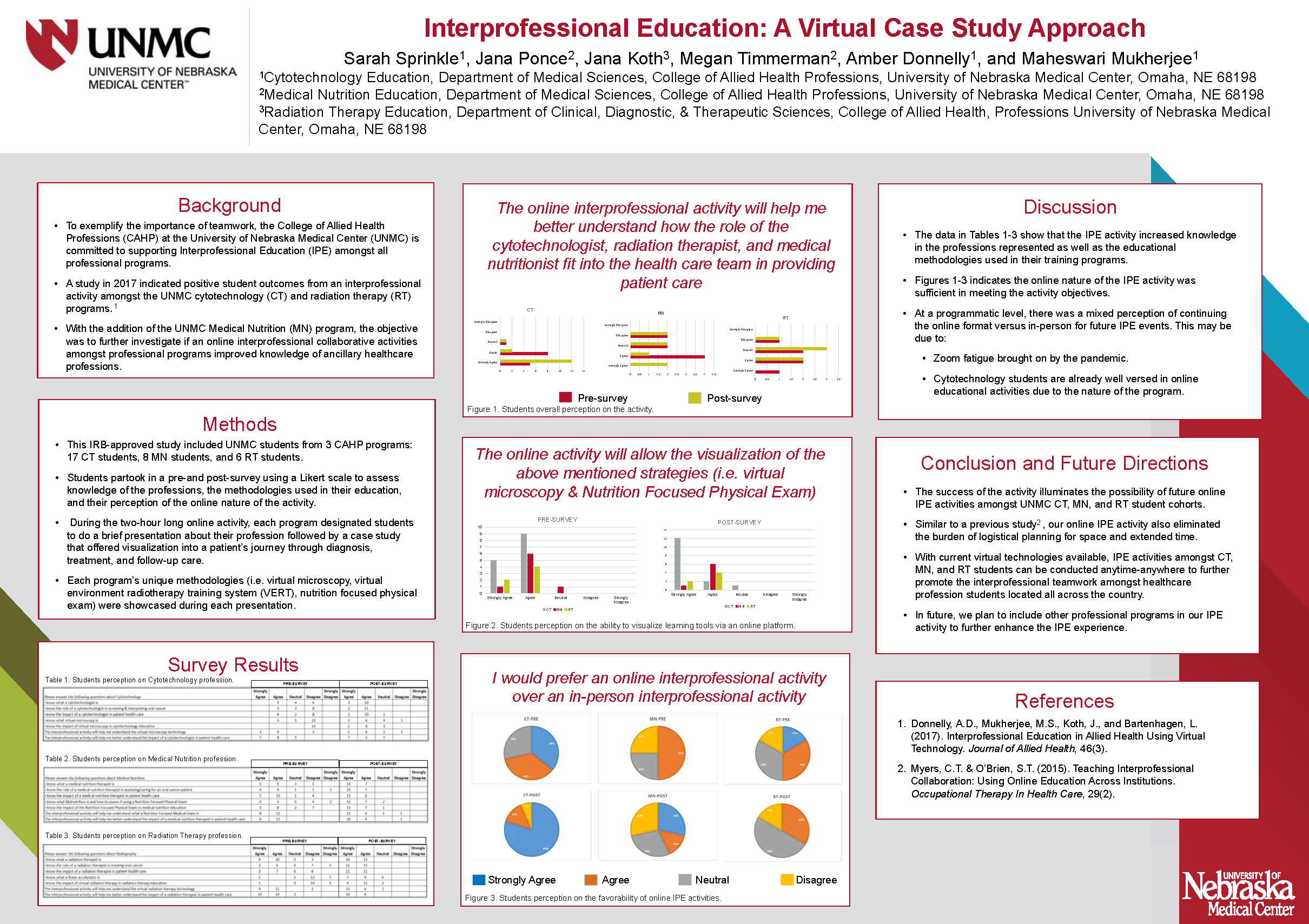
POSTER PRESENTATIONS
Materials should NOT be shared with those that are not registered for the conference. Poster abstracts are not proofed for spelling and/or grammar errors.
Interprofessional Education: A Virtual Case Study Approach
Sarah Sprinkle, CT(ASCP)CM
University of Nebraska Medical Center
Objectives
- Describe the importance of obtaining knowledge of other participating professional programs.
- Discuss the value in teaching how professions work together to provide patient care.
- Discuss the success of online IPE activities.
Abstract
Background: Teamwork is a skill embodied in the healthcare professions. To exemplify its importance, the College of Allied Health Professions (CAHP) at the University of Nebraska Medical Center (UNMC) is committed to supporting Interprofessional Education (IPE) amongst all professional programs. With this support, the cytotechnology (CT), medical nutrition (MN), and radiation therapy (RT) programs designed an online activity to show the importance of each profession in caring for a patient. The objective was to investigate if online interprofessional collaborative activities amongst professional programs improved knowledge of ancillary healthcare professions.
Methods: Participants included UNMC students from 3 CAHP programs: 17 CT students, 8 MN students, and 6 RT students. Students partook in a pre-and post-survey using a Likert scale to assess knowledge of the professions, the methodologies used in their education, and their perception of the online nature of the activity. During the two-hour online activity, each program designated students to present their profession and case study that offered visualization into a patient’s journey through diagnosis, treatment, and follow-up care. Each program’s unique methodologies (i.e. virtual microscopy, virtual environment radiotherapy training system (VERT), nutrition focused physical exam) were showcased during each presentation.
Results: The results show that the activity increased knowledge in the professions represented as well as the educational methodologies used in their training programs. The online nature of the IPE activity was sufficient in meeting the activity objectives. At a programmatic level, there was a mixed perception of continuing the online format versus in-person for future IPE events.
Conclusions: The success of the activity, indicates that with the technologies available, IPE activities can be conducted anytime-anywhere to promote interprofessional teamwork amongst healthcare profession students.

View PDF version to zoom or download.
